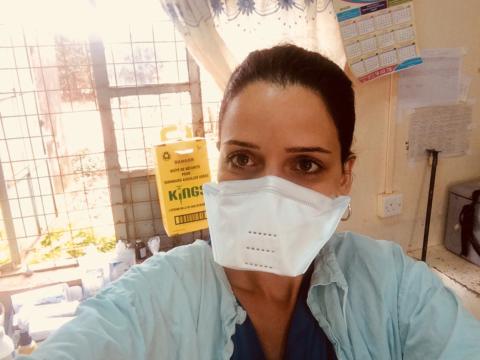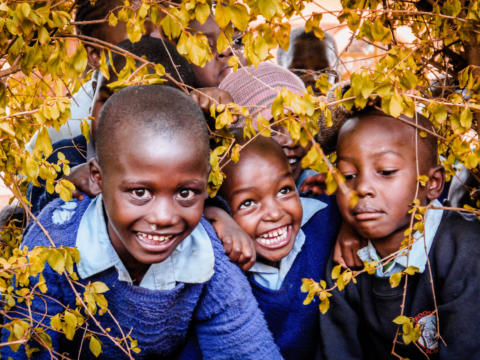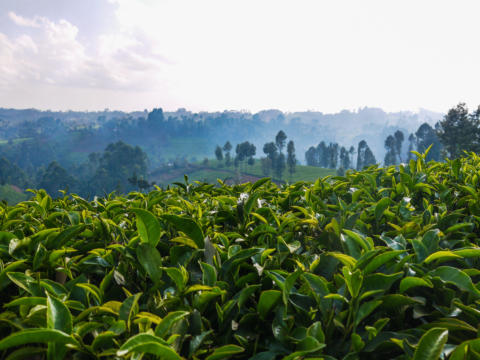Only 420€ per week!
School Assist
Maasai Mara - Kenya
Bring your enthusiasm, energy, and effort to a local school in the heart of the Maasai Mara. You will be assisting dedicated teachers and deserving students.
You’ll assist in classes of English, Math, History, etc. or even with Sports Coaching, at an amazing school that is providing quality education to students living in the Maasai Mara. You may be lucky enough to see wildlife in the distance and you can visit an amazing national park with the Big 5, that is just minutes away on the weekends.
Program Description
You will be in the heart of the Maasai Mara and enjoying all that goes along with the life there as you assist in a local school that is short on resources, but long on desire to develop and thrive.
Teachers here are putting all of their energy into educating students that have been historically underserved. Typically young Maasai males are tending to herds for their families and young Maasai females are being prepared to be wives and mothers. The emphasis on education has been slowly increasing, but the associated costs for school fees, uniforms and supplies make it difficult to send all the children in the family to school.
The objective of partnering with this school is to fill in some of the gaps that exist and to create a bridge to the possibilities that exist outside the Mara. Most of these students have never been to the capital city of Nairobi that is just 6 hours away and their interaction with visitors from other places is usually limited to passing waves from tourists in vehicles on their way to the National Park.
You can expect to help all around the campus, from the classroom to the dining hall, to the garden or to the make-shift play area. What you bring in terms of community engagement will excite these students and what you will gain will be a deeper understanding and appreciation for others having an experience very different from yours at home.
There is also the added bonus of being so close to the Maasai Mara National Park that you can go there on the weekend and have a chance to catch a glimpse of the Big 5 (Elephants, Leopards. Lions, Buffalo, and Rhinos). Depending on the time of year, you might even get a chance to see the Migration of the Wildebeest as they cross the Mara river back and forth between Kenya and Tanzania. You will of course have to arrange these types of tours on your own, as they are not included in our program, but it is very easy to do, considering your close proximity.
Aims & Objectives
- Improve the village children’s educational prospects and widen their cultural interactions
- Gain invaluable and practical experience in teaching
- Assist the local staff by providing an extra hand
- Learn more about the Maasai Mara region and the Culture
Schedule
Monday to Friday
Your day will likely be 4-6 hours of assisting at the school and the exact tasks will depend on the need at the moment. When teaching you will be responsible for daily lesson planning and being prepared for class each day. You will be staying on or near the school grounds in a very basic, no frills-accommodation. There is no flush toilet and you will need to be conscientious about conserving water. You will have very simple homestyle dishes that are typical of this region and there will be limited opportunities to go to the bigger town which is more than an hour away.
Note: This schedule can be changed and/or amended depending on weather conditions, local conditions and unforeseen circumstances.
Participant Criteria & Requirements
Standard Requirements
Minimum age: –
Maximum age: –
Minimum English level: Intermediate
CRB required: On Signup
Passport copy required: On Arrival
Resume copy required: No
Required qualification: None
Additional Requirements
• Please be advised that this is an extremely remote location and there are very minimal amenities available once you arrive. You may want to bring anything you might need with you to the program and plan to have an open heart and mind to fully enjoy this truly amazing experience.
Additional Equipment
There are no further requirements for this program.
Required
- Modest clothing (covering the knees and shoulders) is required while on school grounds and throughout the Maasai community.
Optional
- Ball, jump ropes, frisbees, etc.
- You are more than welcome to bring teaching materials/resources for your class such as:
- Interesting board games
- Books/Comics
- Musical instruments
- Worksheets
- Cultural items of interest
- And anything else you think will help!
Location
Located in Narok County, the Maasai Mara is one of the gems of the southwestern region of Kenya. Named for the ancestral people of the region whose villages can still be found throughout this vast area, this National Reserve borders on Tanzania and is home to a multitude of amazing animals including the Big 5 (Buffalo, Elephants, Leopards, Lions, and Rhinos), but you should also expect to see Wildebeest, Hippos, Cheetahs, Crocodiles, and Zebras throughout this park as well.
The Mara’s well-preserved wilderness landscape is full of the acacia trees and tall savannah grasses where the wildlife inhabitants are able to blend into the background when necessary for survival. But when it is cooler in the morning and evenings they come out to roam, bathe, or search for food and that is when you just might catch a glimpse of these majestic creatures in action.
Many people flock to this region at different times of the year just to witness the great migration where more than a million of the Wildebeest make their way across the river to Tanzania and then back to the Mara months later, dodging crocodiles, lions and others who lie in wait for the opportunity to make them their prey. It is the circle of life and the nature of the wild that intrigues people from all over the world to come and witness this marvel and enjoy this riveting and magnificent sight.
About the Accommodation
The accommodation will be on the school grounds or in a nearby homestay. The lodging will be very simple with few amenities, toilet and bathing area will be away from the sleeping quarters, but efforts will be made to help you adjust to a simpler way of being during your stay. Resources are limited and power outages and shortages in the water supply can occur. We ask that you do your part to conserve water and energy, but to also help to keep the room and other common spaces tidy. We also request that you are mindful of the close proximity to school-aged children and refrain from smoking, drinking alcohol or using profanity as school staff is held in high regard in this community. There will be no WIFI onsite, but you are encouraged to get a local SIM card on arrival so that you will be able to access the internet and stay in contact whenever possible.
Food Arrangements
Food will be simple homestyle meals prepared by locals, which are typical to the region, based on whatever fruits and vegetables are in season at the time. You can expect lots of rice and ugali with small portions of vegetables, occasionally meat and/or chapati will be provided as well. While we do our best to accommodate our participants, if you are a picky eater, have dietary restrictions, or if you think that you will not be satisfied with the local dishes provided you might want to consider supplementing our menu with your own western type foods and snacks that are more to your liking.
Facilities
Due to the remote location, there are no places to shop or banks/ATM’s to withdraw money within walking distance of the program or the accommodation. All of those things will need to be done in Narok (more than an hour away) which is the nearest large town with a variety of shops, supermarkets, banks, and a mall.
Activities & Events
No scheduled activities outside the program.
Sights & Surroundings
Maasai Mara is a must visit for anyone in the region. It has many tours for game drives and overnight stays nearby. You will need to book these on your own, but that will be fairly easy and cost effective considering the close proximity to this National Reserve.
Nairobi is the capital city of Kenya and it is about 3-4 hours away by local transport. There you will find everything that you would expect from a metropolitan city, including fine dining, high-end shops, and nightclubs. There are also attractions such as Nairobi National Park, the Giraffe Center, the Elephant Sanctuary and Bomas of Kenya.
Narok is the largest town nearby the program location and here you will find a variety of shops, restaurants, clinics, pharmacies, banks/ATM’s and supermarkets.
Transportation
From this location we do not provide free transport to other locations.
Quick Facts
Name: Republic of Kenya
Population: 45 million
Capital: Nairobi
Language: English, Swahili
Currency: Kenyan Shilling (KES)
Time zone: UTC +3
Country Information
The first thing that might pop to mind when thinking of Kenya are lions, zebras and leopards. However, this vast country has much more to offer. With 40 national parks and reserves scattered around the country, Kenya features almost every landscape and activity that you can imagine and it will suit any type of traveller’s palette.
Undeniably, safaris are the core of tourism in Kenya, but you might also venture in deeper and discover the Maasai, a semi-nomadic tribe known for its color-filled adornments. Nairobi is another destination to explore, with its bustling nightlife and unique vibes. For those who love nature, a visit to the Great Rift Valley is a must. And for those who enjoy chilling at the beach, Kenya’s coastal area covers almost 80,000 square kilometers and remains sun-filled during most of the year!
Climate
Kenya is a big country and its climate varies from tropical along its coast to arid in the north and quite temperate inland. Kenya receives a large amount of sunshine year-round but generally, the hottest period is considered take place in February and March while the coldest one between July and mid August. The “long rains” season happens between March and June, while the “short rain” season is between October and December.
Culture
Over the course of history, Kenya has been the hub of migration and henceforth, the country has become one of the most diverse culture and language-wise.
The country has over forty different ethnic groups, including Luo, Kamba, Maasai and more. Each speaks a variety of mother tongues, although Swahili remains the most widely spoken language. Moreover, European, Arab, Indian and Pakistani groups who came to the country in the 19th century can be added to the mix of diversity.
Even though religions such as Christianity and Islam are widely spread, many still believe in the ancestor world, where the dead have an impact on the lives of the living.
Today, Kenya’s culture, including forms of dress, music and food sees its strong influences from other parts of Africa, India, Europe and the United States. However, in certain parts of the country, many communities retain their traditional lifestyle and culture and people still wear clothes, skins, jewelry as they did centuries ago. Many remote tribes remain absolutely isolated and indigenous as
Gastronomy
Traditional Kenyan food are known for consisting corn, potatoes and beans. A staple dish is Ugali, a porridge made out of maize. Another typical delicacy is irio, a blend of corn, beans, potatoes and beans dipped into meat or vegetable stews.
Transportation
Plane
Kenya Airways offers daily flights between Mombasa, Malindi, Lamu, Kisumu and Nairobi. Likewise, another popular choice is Air Kenya, which flies regularly between Nairobi, Mombasa, Malindi, Lamu, Amboseli, Maasai Mara, Meru, Nanyuki and Samburu.
Bus
Kenya has a large bus network between many destinations, but be advised that roads are bumpy. For safety reasons, we highly advise to use long distance buses only during daytime.
Minivan
Minivans, known as “matatus” in Kenya are another way to get around for short and medium distance travels. Taking a matatu is a must to experience the real Kenya as they are often decorated in colorful and fascinating colours. You can hail a matatu on the side of the road and in this day and age, the network is easier to figure out than ever as routes and schedules are provided on Google Maps.
Train
The train in Kenya is often dubbed the “Lunatic Express”. It travels between Nairobi and Mombasa three times a week. It is undeniably a great experience to travel by train but if time is an issue, we advise you to go for another method of transportation as the train has a bad reputation for being extremely slow and often delayed.





